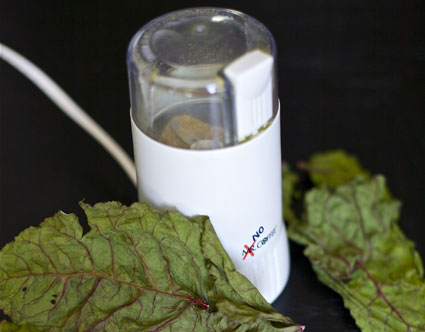
Oh, you guys. You know that feeling when you stumble upon something so rad, so essentially, perfectly relevant, so flippin RAD-TASTIC that you actually go past the point of peeing-in-your-pants-excited and just sort of sit back and sigh and shake your head? Yeah. Like that.
When most people think about food preservation, they’re focused on handling the bounty of produce that warm-weather brings. Canning berries, freezing fruits, fermenting veggies and pickling cucumbers – it’s all part of the summer flow for urban farmers and enthusiastic locavores alike.
But what about people like me? What about people who are, shall we say, somewhat addicted to enamored of their greens? People who can’t go a few hours without wolfing down some kale or rolling up some collards or blending a bunch of spinach ? For us, summer means the end of greens season (they thrive in the cool climate of late spring and early fall), and 3(ish) months of life without local organic green goodness. Summer is a sad time for my blender . . .
 Ginormous organic chard for $1/bunch (!!!). I couldn’t turn it down, but how could I use it all up before it went bad? And so began my scheming.
Ginormous organic chard for $1/bunch (!!!). I couldn’t turn it down, but how could I use it all up before it went bad? And so began my scheming.
This concept is so simple that I simply can’t believe it hasn’t occurred to me sooner. And I really can’t believe I haven’t seen it elsewhere in the blogosphere! But there you go.
It goes like this:

Procure a large quantity of fresh, local, organic greens (like spinach, collards, chard, dandelion, etc). And I do mean large. In the picture above, I’m holding the entire yield of kale from this year’s garden. That’s about 1/5 of the total greens I used.
Wash and de-rib the leaves. Lay them out flat on dehydrator trays (for a raw powder) or baking sheets (for oven, non raw). Set your dehydrator at 115º and allow to run overnight, or until leaves are completely dried (up to 12 hours). Alternately, you can set your oven at the lowest temperature and use that, but I haven’t tested this method so you’ll have to keep an eye on the timing. Just remember, you’re aiming to pull the moisture out – not to actually cook them. So keep the setting low!
Next, you’ll need to grind your greens into powder. I like to use an electric coffee grinder which I reserve for things like flax, dried coconut, and other caffeine-free culinary specimens.


You could also use a spice grinder, a mortar and pestle, or a food processor. But this is a LOT of product to work through, and you want to get as fine a powder as possible, so a coffee grinder really fits the bill.
Grind grind grind in batches, until voila! You’ve saved a few months worth of greens.
I had to repeat this entire process four times, and it still barely yielded a couple cups of powder (and I have a 9-tray dehydrator!). But that means this is incredibly concentrated green nutrition. Use it as you’d use any other green powder – for me that means a lot of smoothies. A little bit goes a long way!
This will make a great project for late autumn, when the second crop begins to die back, and once again we need to preserve a stock of fresh local organic greens to make it through the off season.

Enjoy!






Pingback: Raw Resources | Bonzai Aphrodite
Pingback: Turnip Round-up: How to Preserve and Store Them - WellPreserved.ca
Pingback: Welcome To My 2014 Yard & Garden Adventure! | Bonzai Aphrodite